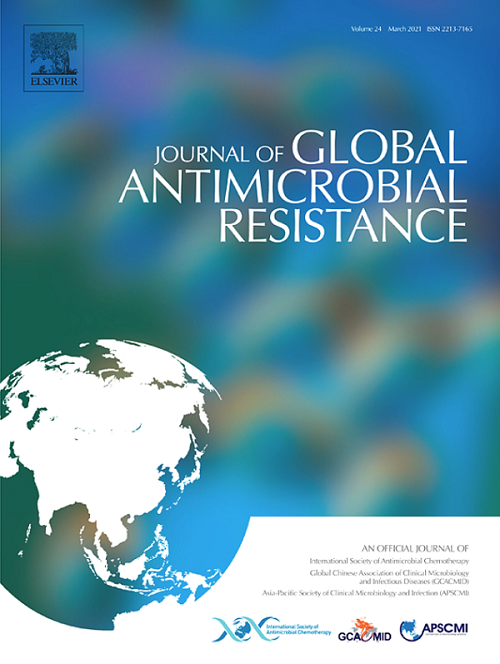In-Vitro Antimicrobial Susceptibility Results of Brucella Species in Eastern Türkiye
IF 3.7
3区 医学
Q2 INFECTIOUS DISEASES
引用次数: 0
Abstract
BACKGROUND
Brucellosis stands as the prevalent zoonotic infection globally. This disease places substantial economic burdens and presents challenges to public health. Regular monitoring of antimicrobial susceptibilities is crucial due to documented instances of treatment failures, relapses, and resistance observed in studies.
AIM
The study aimed to assess the sensitivity of antimicrobial agents against Brucella spp.
METHODS
Between January 2023 and June 2024, 45 Brucella isolates were included. Species identification was achieved 16S rRNA analysis. The strains were inoculated on Mueller-Hinton agar supplemented with 5% horse blood and β-NAD, followed by incubation with eight antibiotic discs. The European Committee on Antimicrobial Susceptibility Testing (EUCAST) 2024 guideline was used.
RESULTS
Among 45 participants, 46.7% were women and 53.3% were men, with an average age of 41.3 years (±15.6). Species determination through 16S rRNA analysis revealed Brucella melitensis in 36 (80%) patients and Brucella abortus in 9 (20%) patients. Gentamicin, rifampicin, ceftriaxone, tetracycline, trimethoprim-sulfamethoxazole and streptomycin were detected sensitive. Levofloxacin and ciprofloxacin were determined susceptible increased exposure 84.5% and 95.6% rate respectively. No difference was detected between Brucella melitensis and Brucella abortus regarding their susceptibility to antimicrobial agents (Table 1).
CONCLUSION
Our study predominantly identified increased exposure patterns for ciprofloxacin and levofloxacin, suggesting that quinolone resistance could pose future challenges in treating brucellosis. Monitoring antibiotic resistance in Brucella isolates is crucial for disease management. Regular surveillance of resistance distribution and prevalence among isolates in endemic countries is essential. This data could inform updates to treatment guidelines and aid in disease control efforts.
求助全文
约1分钟内获得全文
求助全文
来源期刊

Journal of global antimicrobial resistance
INFECTIOUS DISEASES-PHARMACOLOGY & PHARMACY
CiteScore
8.70
自引率
2.20%
发文量
285
审稿时长
34 weeks
期刊介绍:
The Journal of Global Antimicrobial Resistance (JGAR) is a quarterly online journal run by an international Editorial Board that focuses on the global spread of antibiotic-resistant microbes.
JGAR is a dedicated journal for all professionals working in research, health care, the environment and animal infection control, aiming to track the resistance threat worldwide and provides a single voice devoted to antimicrobial resistance (AMR).
Featuring peer-reviewed and up to date research articles, reviews, short notes and hot topics JGAR covers the key topics related to antibacterial, antiviral, antifungal and antiparasitic resistance.
 求助内容:
求助内容: 应助结果提醒方式:
应助结果提醒方式:


